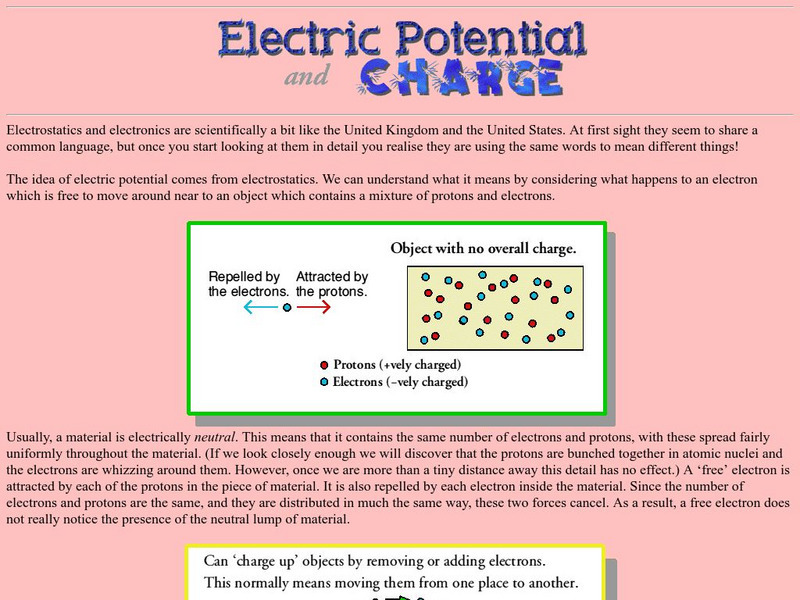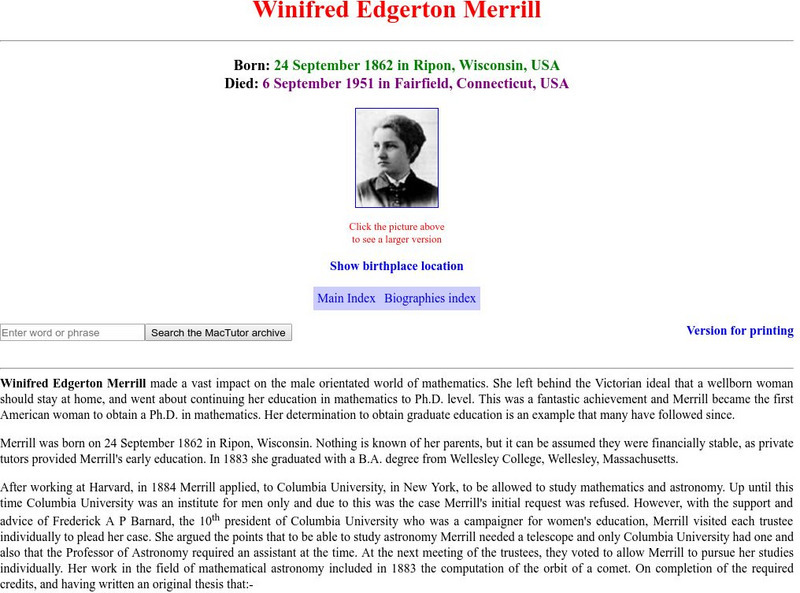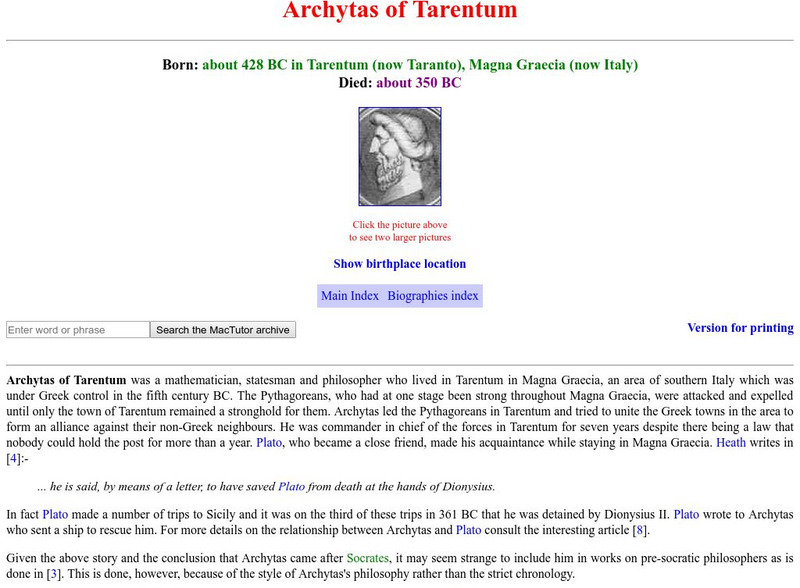University of St. Andrews (UK)
University of St. Andrews: Olga Taussky Todd
This extensive biography highlights the life and accomplishments of Olga Taussky-Todd (1906-1995 CE) the mathematician. Many of her contributions are included in both mathematics research and education. Read more about this amazing woman.
University of St. Andrews (UK)
University of St. Andrews: Non Euclidean Geometry
The University of St. Andrews in Scotland provides an excellent site explaining Non-Euclidean geometry.
University of St. Andrews (UK)
University of St. Andrews: Niels Henrik David Bohr
This resource presents a biography of Bohr, including many personal tidbits, as well as a substantial treatment of his scientific work. Several interesting quotes by and about Bohr are included. It also links to several other sources.
University of St. Andrews (UK)
University of St. Andrews: Julia Robinson
Read about Julia Robinson (1919-1985 CE) a contributor to the world of mathematics and learn the accomplishments and struggles that defined her life.
University of St. Andrews (UK)
University of St. Andrews: Georg Joachim Von Lauchen Rheticus
A biography of the mathematician Georg Joachim von Lauchen Rheticus. Includes numerous quotations.
University of St. Andrews (UK)
University of St. Andrews: Gabrielle Emilie Le Tonnelier De Breteuil Chatelet
This page on French mathematician Emilie de Chatelet offers details of her life and work. Quotes from Voltaire, du Chatelet herself, and others mark how extraordinary it was for a woman of her day to study and write of mathematics and...
University of St. Andrews (UK)
University of St. Andrews: Gabriel Cramer
Information about the life of Gabriel Cramer (1704-1752 CE), 18th century mathematician credited with "Cramer's Rule," though "Cramer was certainly not the first to give this rule."
University of St. Andrews (UK)
University of St. Andrews: Erwin Schrodinger
A very detailed biography of Erwin Schrodinger. Including links and cross references to historical topics.
University of St. Andrews (UK)
University of St. Andrews: Elliptic Functions
Good site with many of the elliptic functions given.
University of St. Andrews (UK)
University of St. Andrews: Charles Augustin De Coulomb
A large complete authoritative biography of Coulomb. Five large pictures, over a dozen links to contemporaries, references, a poster, other mathematicians. A fine source.
University of St. Andrews (UK)
University of St. Andrews: Andre Marie Ampere
Resource provides a biography of the scientist Andre Marie Ampere.
University of St. Andrews (UK)
University of St. Andrews: Leonhard Euler
Lengthy biography of Euler that sets him in relationship with his contemporaries in mathematics and physics. Several quotes and pictures available, as well as links to relevant mathematical topics. A terrific site.
University of St. Andrews (UK)
University of St. Andrews: Sir David Brewster
This biography on inventor David Brewster discusses his accomplishments, including his writings, and his invention of the kaleidoscope and the stereoscope.
University of St. Andrews (UK)
University of St. Andrews: Mariner's Astrolabe (1616)
A page on the Mariner's Astrolabe describes its origins and how it is used. A photo also accompanies the article.
University of St. Andrews (UK)
University of St. Andrews: Zhu Shijie
This University of St. Andrews site describes the works of Chu Shih-Chieh (Zhu Shijie).
University of St. Andrews (UK)
University of St. Andrews: Error Estimate for the Newton Raphson Method
Find the method for finding the error in the Newton Raphson Method at this site.
University of St. Andrews (UK)
University of St. Andrews: Insulators
The nature of insulators is described at the atomic level. Band gap theory is used to explain what distinguishes insulators from conductors.
University of St. Andrews (UK)
University of St. Andrews: Physics and Astronomy: Electric Potential and Charge
From The Scots Guide to Electronics web site. The meaning of electric potential is described. A combination of diagrams and words are used to explain this difficult concept without the use of mathematics. Very well done!
University of St. Andrews (UK)
University of St. Andrews: Hippocrates of Chios
This site looks into the life of Hippocrates, the teacher and mathematician, who worked mostly with circles and cubes.
University of St. Andrews (UK)
University of St. Andrews: Varahamihira
Most importantly discovering trigonometric formulas, Varahamihira also contributed to combination methods.
University of St. Andrews (UK)
University of St. Andrews: Winifred Merrill
The first American woman to earn a Ph.D. in mathematics, Winifred Merrill made many contributions to the world of mathematics. Her life and accomplishments are documented in this short biography.
University of St. Andrews (UK)
University of St. Andrews: Yang Hui
By looking at Hui's work, you will recognize the equations that he had derived in the thirteenth century.
University of St. Andrews (UK)
University of St. Andrews: Archytas of Tarentum
Claiming that "mathematics was composed of four branches, namely geometry, arithmetic, astronomy, and music", Archytas made an impact on Plato and other mathematicians.
University of St. Andrews (UK)
University of St. Andrews: Mayan Mathematics
After a historical introduction, this site from the University of St. Andrews provides information about the mathematics of the Maya Civilization and shows just how advanced they were.






















